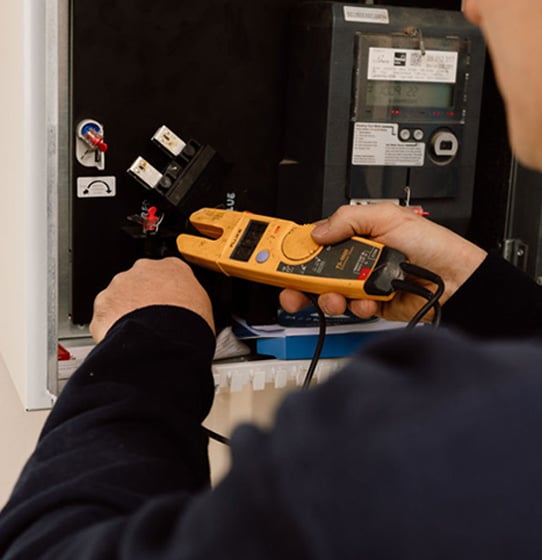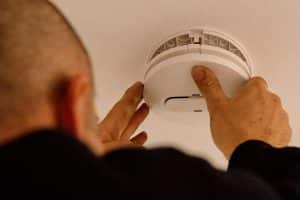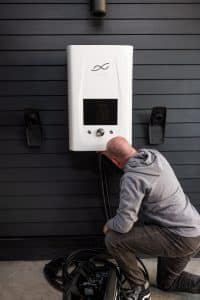Moving from single phase to 3 phase power has more than a few benefits for businesses of all sizes. This is especially true for growing SMEs and medium-sized businesses wanting to scale up their operations to meet customer demands or respond to market conditions.
Of course this also depends on the kind of industry you’re in. If you’re running an office-based company you probably won’t have much need for it, but if your business uses any kind of large equipment you’ll see tangible advantages.
With 3 phase power systems you can significantly increase the amount of power you have available, while becoming more energy efficient at the same time. Using more power and saving on energy use might seem contradictory, so read on and we’ll explain the 3 phase power advantages.
But first let’s quickly discuss the difference between single phase and 3 phase power…
Single phase vs 3 phase power
Single phase power is the regular type of power supply to your home. It provides a single circuit connection using a three wire system: one live, one neutral and one grounding wire.
The power flows from your electricity supplier through the live wire, and then the voltage reverses and flows back along the neutral wire. This is the basis of AC power (alternating current).
Your power supply is thus being constantly interrupted as it flows back, if only for milliseconds. You don’t notice it, but in effect no power is delivered during this part of the cycle. This means that you’re not getting a truly constant power supply.
The problem with single phase power for business use
Why should these minute power interruptions matter if you don’t notice them?
While you might not feel them, your business equipment does. They may need a more balanced kind of power delivery to perform optimally, for instance. And if a piece of equipment is designed to run on 3 phase power, it will underperform and possibly be damaged in the long run if it doesn’t receive the kind of electricity supply it needs.
How 3 phase power works
A 3 phase power system provides three separate electrical currents. It uses four wires, three of which are active, and one neutral. This effectively doubles the amount of power delivered to your premises. A single phase connection provides 230 – 240 volts, whereas a 3 phase connection supplies 400 – 415 volts.
Furthermore, by splitting the power delivery this way, those minute power interruptions are eliminated, as two wires are always active when another switches to the voltage-return state.
This creates a more stable power supply, which is also more balanced and consistent. Your equipment will operate as effectively and power-efficiently as its designed to.
What kinds of equipment use 3 phase power?
You may be wondering what equipment requires a 3 phase power supply, and if you should switch to it. Here’s a brief list of some of the most common types:
- Commercial kitchens
- Large electrical generators or other motors
- Business air-conditioning systems
- Tube motors
- Data servers
- Welding equipment
- Heavy-duty appliances like commercial refrigerators
- Pottery and ceramics kilns
Is there an advantage to switching to 3 phase power in Australia?
Besides the benefit of a more consistent power supply, switching to 3 phase power offers several other advantages.
Lower energy costs for business equipment
One of the biggest 3 phase power advantages is that it can reduce the energy costs of the equipment you run as part of your business operations. The main reason for this is that an uninterrupted electricity supply leads to less energy loss caused by vibration or heating.
Because your power supply never drops to zero, as it does during the voltage return phase in a single phase circuit, your equipment actually draws fewer volt amps. In the long term you’ll use less power overall and lower your energy bills.
Improved productivity from your equipment
If you have equipment that’s specifically designed to run on 3 phase power, you’ll see an obvious improvement in its efficiency when you change from single phase power. You’ll also extend the lifespan of your equipment, as the amount of work it needs to do to draw the required power will be less, thanks to the constant, uninterrupted supply.
Fewer incidental costs
Direct delivery of 3 phase power to certain kinds of equipment can reduce the amount of money your business needs to spend on other components. For example, if you’re running a data centre, feeding this kind of power directly to the server racks removes the need to use expensive additional cabling.
Reduced risk of power outages
As you’re using three separate circuits in a 3 phase power system, your business will be less vulnerable to the power outages that can be caused by drawing too much electricity from a single phase circuit. You’ll also experience fewer circuit breaker trips. Three phase power further allows you to use single alternating currents to power a number of different sub-circuits, which also helps to prevent power outages.
A more efficient electrical system
Three phase power requires fewer of its own components, like resistors, conductors and circuit breaker pole positions. This makes for a more compact and efficient electrical system. Additionally, having fewer components decreases the amount of resistance in the overall system. Resistance causes electricity to be lost, so you’ll lose less if you’re on 3 phase power.
Growing your business
A 3 phase power supply gives your business scalability. The extra electrical capacity available will allow you to add equipment as you need to, without having to worry about overloading your electrical circuits or suffering power failures and tripped switches. This allows you to plan ahead and take advantage of new technologies in your industry as they emerge.
Switching to 3 phase power in Melbourne
It goes without saying that switching from single phase to 3 phase power isn’t a job for amateurs. You’ll need a professional electrician with at least a Level 2 certification.
That’s where we can help you. We have highly experienced electricians in Melbourne who are fully qualified to do this kind of work.
Contact STL Electrical to upgrade your system safely and reliably, and start reaping the benefits.




